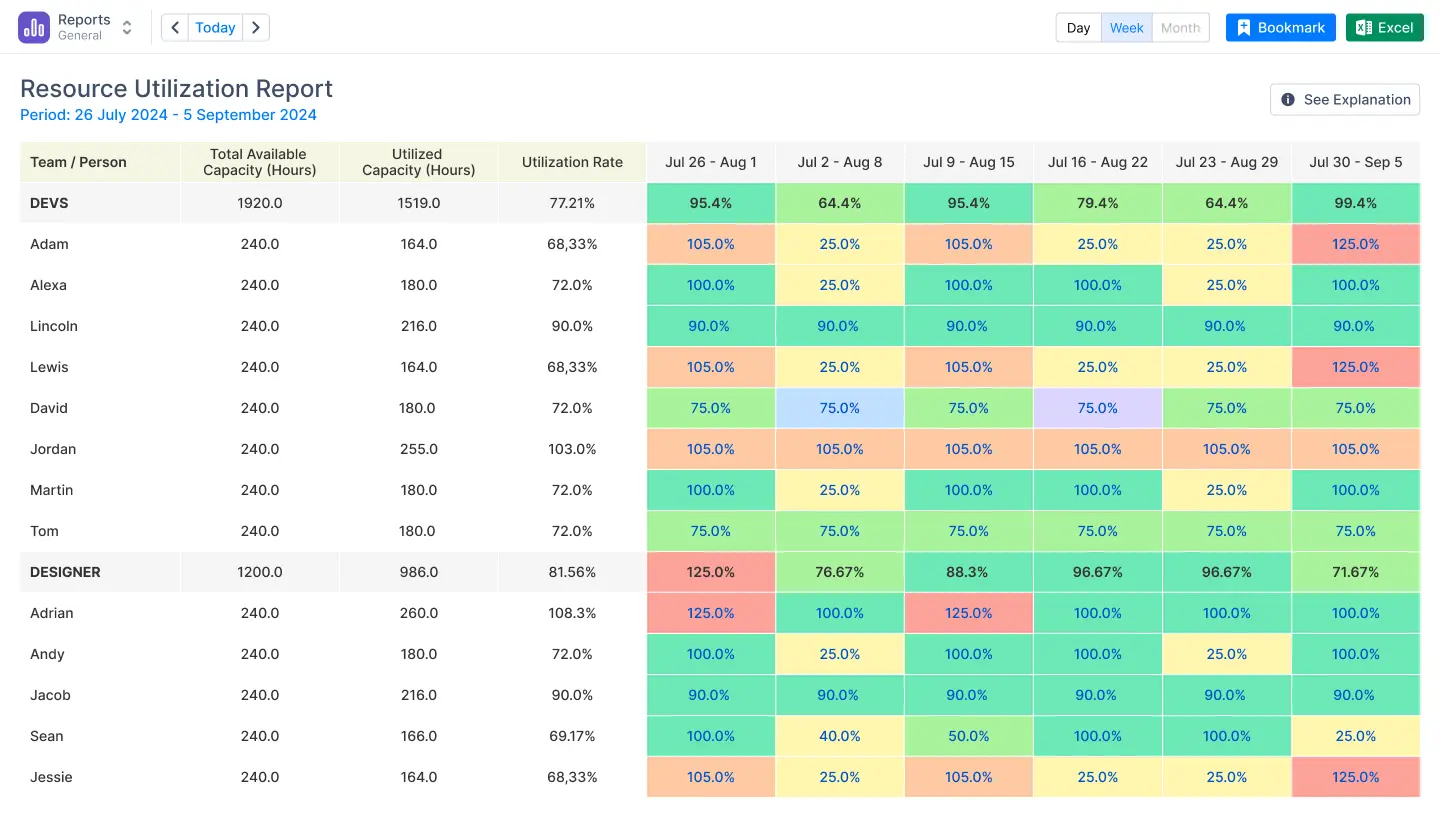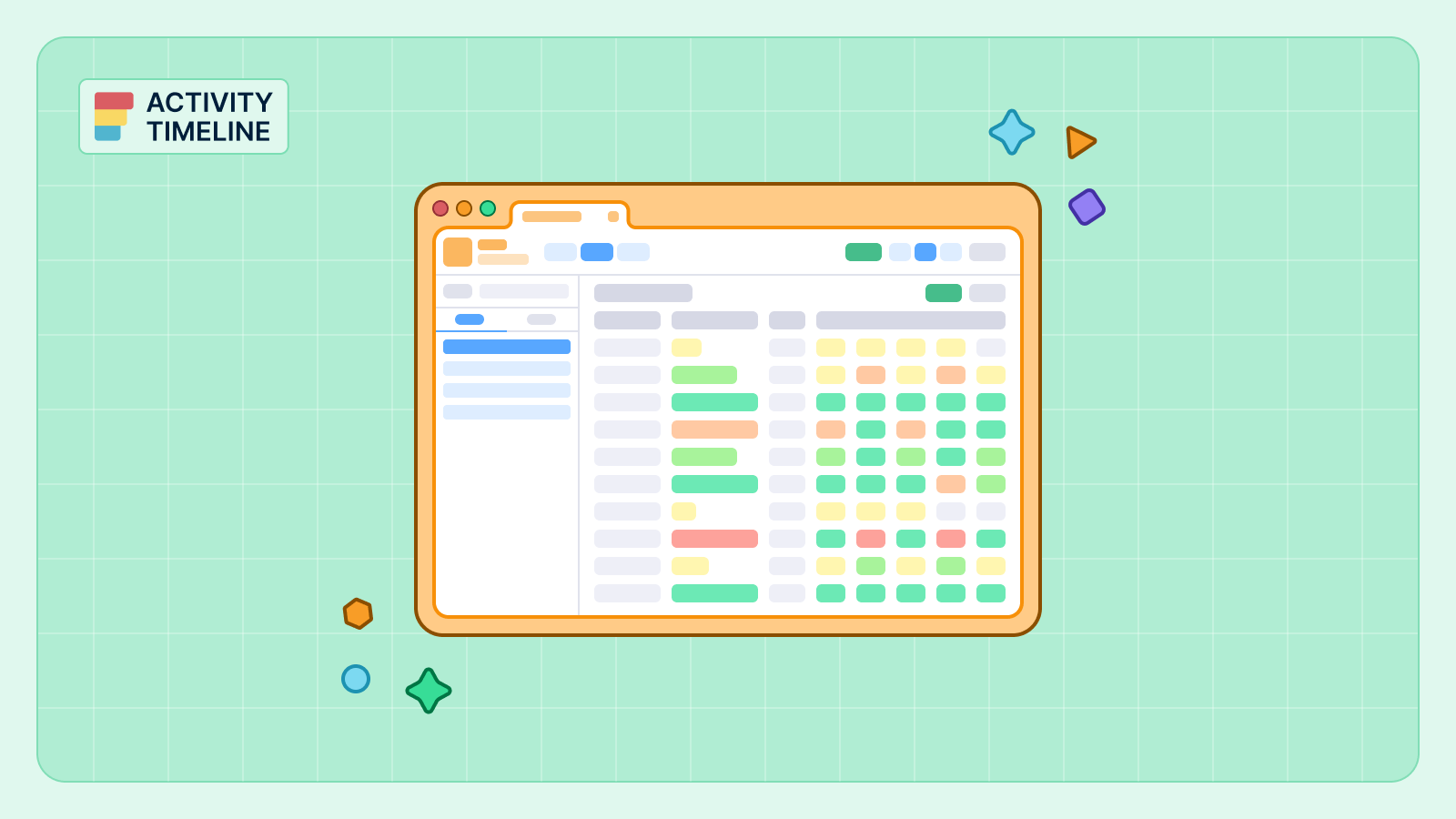It’s 9 a.m. You’re staring at an Excel sheet that looks like a flight control dashboard—tabs, filters, color-coded cells, and that one formula that broke again. You tell yourself it’s fine; Excel’s flexible, everyone uses it, and hey, it’s free.
But here’s the uncomfortable truth: that “free” spreadsheet is probably one of the most expensive tools in your workflow.
Not because of its license fee, but because of what it costs you in time, accuracy, and sanity.
The Spreadsheet Tax: The Hidden Costs of Excel Planning
1. The Cost of Wasted Hours
If you’ve ever spent your Friday afternoon updating project timelines in Excel, you’ve already paid the price.
Manual data entry eats your week in invisible chunks. Studies show teams lose about 9 hours per week copying and pasting data between spreadsheets and systems. Multiply that by 10 people, and you’ve just lost a whole workday—every single week.
Think about it: how many hours have you spent chasing the “latest” version of a planning file, or rechecking whether the totals in column N actually match Jira’s real numbers?
That’s not productivity. That’s unpaid spreadsheet labor.
2. The Cost of Critical Errors
We’ve all been there. Someone updates one formula. Another person sorts the column incorrectly. Suddenly your capacity plan says a developer has -8 hours available next week.
You laugh—until you realize a client delivery slipped because of it. It’s not rare: about 88% of spreadsheets contain errors. A misplaced formula once cost a construction firm $3.7 million in a single bid. Your loss may not be that dramatic, but if a bad cell can derail your timeline, your “planning tool” isn’t doing its job, it’s doing damage control.
3. The Cost of Zero Visibility
Spreadsheets don’t tell you who’s actually available. They tell you who was available when you last updated the file.
You know the dance: someone’s on vacation, someone else is double-booked, and you discover it after a sprint starts. No matter how many filters or Gantt charts you build, Excel can’t show you real-time capacity. It’s static. Out of sync the second you close it.
In fast-moving teams, that lack of visibility costs opportunities. You might miss that one designer who could’ve helped unblock a launch, or realize too late that a backend dev was booked solid for the month. Every blind spot adds friction and friction kills momentum.
4. The Cost of Team Frustration
Nobody joins a tech company to babysit Excel.
But when your “planning system” is a file buried in Slack threads and email attachments, that’s what happens.
People stop trusting the plan. They stop updating it. Meetings turn into status therapy sessions: “Wait, which file are we using again?”
Over time, the burnout is real. Studies link repetitive data work to higher stress and lower engagement. One report found that 56% of employees feel drained by manual data entry. The best people—the ones who want to build, design, lead—don’t want to wrestle spreadsheets. They leave, and you’re left patching the system again.
Cost Breakdown — Excel-as-Planning-Tool
{{rich-cta-1}}
How ActivityTimeline Fixes It
You already have Jira. What you’re missing is the layer that makes it truly visual and usable for planning. That’s where ActivityTimeline steps in.
Instead of Manual Data Entry…
Every task from Jira shows up on a shared, visual timeline. You can drag, drop, and plan directly in Jira. No export. No sync lag. The data updates itself every few minutes. You focus on the work, not the wiring.

Instead of Version Control Hell…
ActivityTimeline becomes your single source of truth. Everyone sees the same plan, live. No “final_v3_reallyfinal.xlsx.” If a task moves, everyone knows.
Instead of No Visibility…
You get live workload and capacity dashboards. Who’s overbooked? Who’s free next week? The system highlights it instantly—red for overloaded, green for good. You can forecast capacity weeks ahead, for a specific person or across multiple teams, without opening a single tab.

Instead of Inaccurate Reports…
Reports build themselves from real Jira data. Planned vs. Actual hours, time tracking per project, team utilization are all there, ready to export if you really want to. But you won’t, because you’ll finally trust the dashboard.

Stop Paying the “True Cost”
Let’s be honest: Excel got you this far. It’s flexible, familiar, and free. But at scale, it becomes the duct tape holding your planning together—and duct tape doesn’t scale.
Every formula, every version conflict, every “Who changed this cell?” moment adds up. And those hidden costs? They compound quietly until you can’t tell where the time went.
ActivityTimeline is what happens when you stop duct-taping Jira and start running it like a system built for real visibility. It doesn’t just replace your spreadsheet; it eliminates the need for one.
Your future self and your team will thank you.
{{rich-cta-3}}



















